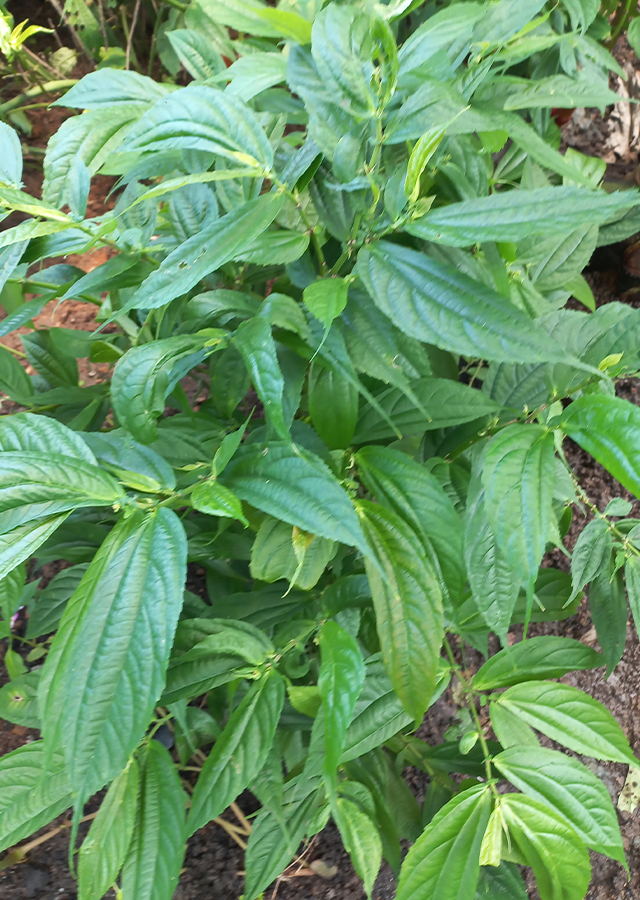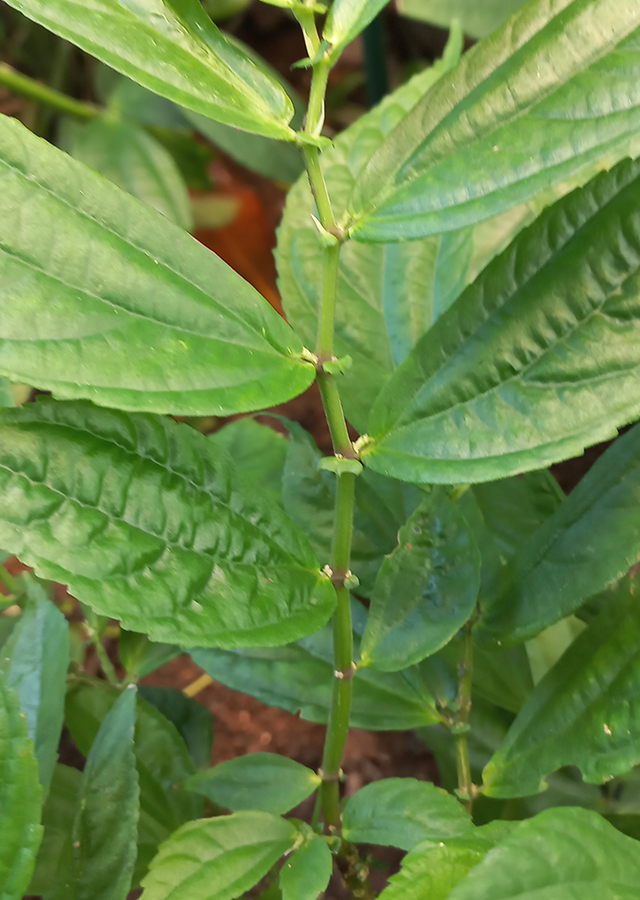Traditional Herbs from Elatostema reticulatum
treating_stomach_pain_and_diarrhea
- Prepare enough leaves and stems of forest spinach\u00a0wash them thoroughly.
- Boil until boiling.
- Let it warm/cold.
- Strain then drink.
vomiting_diarrhea":[ "Take one leaf of wild spinach and one leaf of tiger silverfish, wash it thoroughly.
What is Elatostema reticulatum Looks like??



Parts of Elatostema reticulatum that could be used
- Leaves
- Stems
Elatostema reticulatum Distribution
Elatostema reticulatum or forest spinach is a plant from the Urticaceae family that originates from Eastern Australia, Solomon Island. This species can be consumed as a vegetable, where the young stems and leaves can be cooked as a substitute for spinach. Traditionally, this species has also been used as an ingredient in medicinal herbs, which are believed to be able to treat disease complaints, especially digestive disorders.Agroecology of Elatostema reticulatum
Jungle amaranth grows in damp to wet shady areas on rocks along or in creeks in rainforests. The altitude range is from 110 to 1,250 m above sea level.
Morphology of Elatostema reticulatum
- Taproot.
- Stem about 7 mm in diameter, green, round, hairy.
- Single leaves, opposite, green, sitting or sessile leaves (petiole length < 2 mm) or short-stemmed (length 2 -4.5 mm), lamina not lobed. Stipules narrow triangular, covering terminal buds sparsely hairy on lower surface (abaxial surface), glabrous on upper surface (adaxial surface), ovate to elliptical, often slightly falcate, leaf margins uniformly toothed, leaf base asymmetrical or slanted, leaf tip or apex tapered, surface not wrinkled (rugose) pinnate, symmetrical, with 10 - 13 pairs of veins linear, found in primary, secondary and tertiary veins on the lower surface (abaxial). Oil spots are visible on the upper surface of the leaf blade as craters small.
- Unisexual flowers, flowers are borne in dense umbels subtended by greenish to transparent tepals with ribs on the outer surface extending beyond the blunt apex. Male inflorescences pedunculate, branched, irregular, involucral bracts present, hairy. Male flowers actinomorphic, 4 or 5 tepals, connate (at least lower half) to nearly free (not attached), hairy, stamens 5, bent, anthers Y-shaped, anthers explode explosively releasing pollen in a cloud small, ovaries not yet perfect. Female inflorescences sessile, involucral bracts present, hairy. Actinomorphic (or slightly asymmetrical) female flowers, 4 tepals, 3 staminodes (immature or sterile stamens), straight ovule, no style, stigma oval, filiform to linear." Fruit achene, uncovered (or only partially), tuberculate, small, smooth surface, star-shaped, purplish in color.
Cultivation of Elatostema reticulatum
Plant propagation by stem/root cuttings or layering.
Elatostema reticulatum, more details :
Chemical Content of Elatostema reticulatumInformation not found. Need further investigation.
Benefits of Elatostema reticulatum
Treats stomach ache, diarrhea and vomiting.
Simplisia of Elatostema reticulatum
Another Facts for Elatostema reticulatum :
Synonym of Elatostema reticulatumElatostema reticulatum var. glabrum Domin, Elatostema reticulatum var. minus Domin, Elatostema reticulatum var. sessile Benth.
Habitus of Elatostema reticulatum
Herb. Annual herb, can grow up to 150 cm.
Habitat of Elatostema reticulatum
- Riverside", "Forest", "Rocky Area", "Land
No comments:
Post a Comment